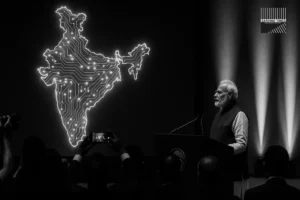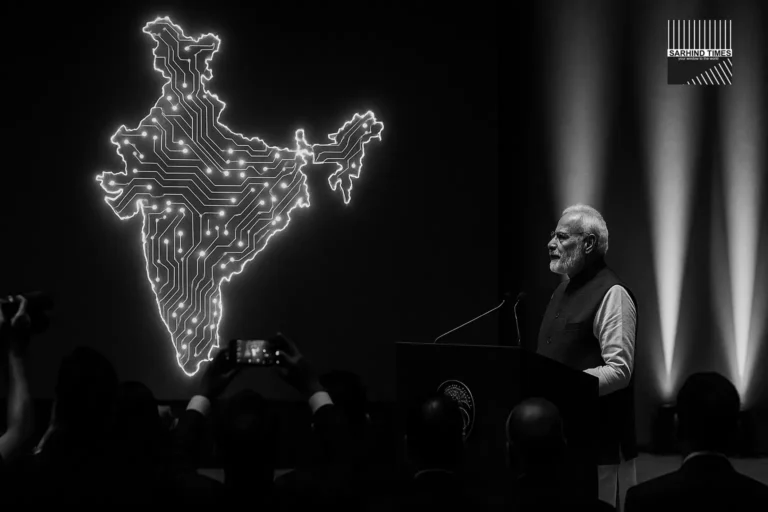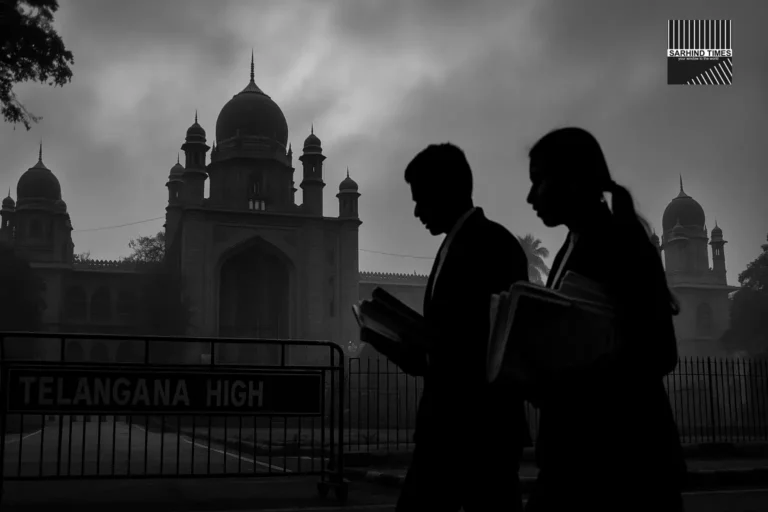The Ministry of Electronics & IT is drafting amendments to India’s IT Rules mandating that all AI-generated media carry origin labels and verifiable metadata to curb deepfakes and misinformation.
In an unprecedented step to rein in the deepfake crisis, the Ministry of Electronics and Information Technology (MeitY) has begun drafting a framework that will require companies and creators to label AI-generated audio, video and images. The goal: make digital content traceable without throttling innovation.
Regulatory Push: What Is Changing and Why It Matters
New Delhi, October 24 – India’s digital landscape is set for another regulatory milestone as MeitY readies a sweeping update to the Information Technology (Intermediary Guidelines and Digital Media Ethics Code) Rules, 2021. The proposed amendments will oblige every intermediary, social platform and AI-based tool to clearly disclose when a piece of content is machine-generated and to embed traceability metadata that regulators can audit. The draft, now under inter-ministerial consultation, follows a year of global debate around the dangers of deepfakes, synthetic political propaganda, and manipulated imagery that blurs the boundary between fact and fabrication.
“AI is redefining creativity — but also reality. We must protect citizens from deception while ensuring responsible innovation.” — Rajeev Chandrashekhar, Minister of State for Electronics & IT
Why Now: The Deepfake Inflection Point
Over the past year, India has witnessed an explosion of generative-AI tools that can fabricate photorealistic faces, clone voices, and simulate speeches of public figures. A viral deepfake in August 2025 that appeared to show a Bollywood actor endorsing a cryptocurrency reportedly triggered investor losses before being exposed. Weeks later, fake clips of political leaders allegedly announcing poll alliances ricocheted across messaging apps, forcing official clarifications. Civil-society groups and cyber-crime cells have raised consistent alarms: manipulated videos are now created in minutes and weaponised across languages and regions.
“The velocity of AI misinformation is faster than the current law’s capacity to respond. Labelling is a first step to create digital accountability.” — Pavan Duggal, Cyber-law Expert
Inside the Draft: Three Pillars of Traceable Truth
According to concept notes reviewed by Sarhind Times, MeitY’s proposal revolves around three mutually reinforcing pillars designed to make synthetic media visible, verifiable, and enforceable at scale.
- Labelling Requirement: An on-screen disclosure or persistent metadata tag that clearly states “This content is AI-generated” for public-facing outputs.
- Traceability Metadata: Tamper-resistant, embedded identifiers indicating the origin model, creation timestamp, and cryptographic checksums for forensic verification.
- Platform Responsibility: Intermediaries must deploy AI-for-AI detection systems to identify unlabeled synthetic media and act through warnings, downranking, or removal.
The draft empowers MeitY to notify technical standards in consultation with the Bureau of Indian Standards (BIS) and CERT-In. Large platforms will likely receive a 6–12 month compliance runway after final notification, with phased timelines for smaller entities.
Global Context: Aligning With Emerging Norms
India’s move tracks a global trend: the European Union’s AI Act foregrounds watermarking and risk classification; U.S. agencies are shaping provenance norms; China requires synthetic-content disclosures. What differentiates the Indian challenge is scale and language diversity, with billions of daily messages across at least 22 scheduled languages and dozens of dialects. For that reason, the draft leans on machine-readable, multilingual standards and open APIs to automate compliance without manual bottlenecks.
“We’re talking about billions of messages across 22 languages. The regulation must be machine-readable and multilingual.” — Ritika Ghosh, Senior Fellow, Centre for Internet Governance
Balancing Act: Guardrails Without Handcuffs
Start-ups worry that over-regulation could chill creativity and push innovation offshore. Founders meeting MeitY last week sought light-touch compliance, sandboxing for research, and safe harbors for open-source model development. Officials counter that automated watermark APIs and self-declaration workflows will minimize friction, focusing on traceability rather than censorship. The guiding principle is simple: citizens have the right to know if the content they see was generated by machines.
“We support transparency, not bureaucracy. If rules become punitive instead of enabling, small developers will flee abroad.” — Sidharth Menon, CEO, Bengaluru-based Generative-Video Start-up
The New Cybercrime: Deepfakes at Scale
Law-enforcement data indicates a surge in deepfake-related complaints, with women disproportionately targeted for blackmail. Political deepfakes spike around elections and public events, complicating official communications. Officers on the cyber frontlines report moving from a handful of cases per month to dozens per day, with content often localized into regional languages that speed its spread through private groups. The current IT Act and IPC provisions capture some offenses, but synthetic impersonation falls through gaps. Labelling and traceability aim to bridge that gap without criminalizing benign creative uses.
How Traceability Works: The Technology Stack
At the core is a digital watermark — an invisible, robust signature embedded into files at creation. On-platform playbacks and downloads verify the tag using standard APIs woven into social apps, browsers, and content management systems. Pilot projects with IIT-Delhi and IIIT-Hyderabad have demonstrated automatic tagging for AI-generated faces with high accuracy; the watermark survives compression and screenshotting, enabling offline verification after widespread sharing.
“It’s similar to a DNA fingerprint for digital files. We’re building a national registry of AI-signatures so misuse can be traced.” — Dr Kavita Bansal, Principal Investigator, IIT-Delhi
Rights and Risks: Privacy, Speech, and Due Process
Activists argue that traceability must not become a backdoor for surveillance or de-anonymization of whistle-blowers, satirists, or vulnerable citizens. They call for encryption of registry keys and judicial oversight for regulatory access. Legal scholars propose a two-tier system: visible labels for users coupled with encrypted provenance accessible to regulators under due process. The government, for its part, emphasizes that the framework aims to inform audiences, not to license content or pre-screen speech.
“Transparency should protect citizens, not expose them. The metadata key must remain with independent custodians.” — Anushka Jain, Internet Freedom Foundation
Cost, Workflow, and Industry Readiness
Early estimates suggest modest unit costs for watermarking at platform scale, with open SDKs under IndiaAI’s “Responsible AI Toolkit” lowering barriers for start-ups. Large media houses already experimenting with AI-assisted graphics say labels could increase, not reduce, audience trust. Broadcasters and ad agencies prefer clear provenance to fend off spoofed campaigns and to comply with brand-safety norms.
“Our newsroom already uses AI for infographics. Clear labels enhance credibility — viewers appreciate knowing what’s AI-assisted.” — Priya Sarin, Digital Editor, Business Channel
Election Integrity: Safeguarding the Public Sphere
The policy’s timing intersects with state election cycles over the next year. Labelling and traceability dovetail with the Election Commission’s guidance on combating digital misinformation. Parties privately acknowledge that a predictable framework can deter impersonation scandals and reduce last-minute disinformation spikes, although they also seek strong penalties for repeat violators and coordinated inauthentic behavior.
International Cooperation and Standards
India will present the proposal at the Global AI Governance Summit in Seoul to build consensus on cross-border watermark recognition. The aim is mutual traceability: Indian-labelled files remain verifiable abroad and vice versa. With support from UNDP and the OECD, MeitY is drafting interoperability blueprints and exploring a “Digital Provenance Forum” in Bengaluru in 2026 to showcase public-private pilots.
Enforcement Challenges: Can Detection Keep Up?
Critics worry that watermarking can be stripped or open-source models can route around detection. To address this, MeitY is designing a “National AI Verification Grid” — a cloud-based service that lets platforms test uploads against a registry of model fingerprints in real time. The system will evolve continuously, updating fingerprints as models change and sharing threat intelligence on spoofing techniques across platforms and research labs.
“Detection AI must evolve as fast as generation AI. If verification lags, the rule fails in practice.” — Arjun Nair, Cybersecurity Researcher
Economic and Cultural Impact: From Digital Trust to Digital Trade
Provenance labels can boost India’s digital exports by giving international clients assurance about content authenticity. In education, advertising, and film, clear disclosures will normalize AI use while protecting audiences from deception. Ed-tech leaders predict labelled AI content will be embraced as long as it is accurate, accessible, and fair. Culturally, a “Created with AI” badge may become as routine as an ingredients list on packaged food — a trust signal rather than a stigma.
“AI-generated learning content can thrive with the right disclosures. The key is transparency, not denial.” — Shalini Rao, Ed-tech Entrepreneur
Key Elements at a Glance
| Component | What It Does | Who Implements |
|---|---|---|
| AI Label | Displays “This content is AI-generated” on-screen or via persistent metadata | Creators, Tools, Platforms |
| Watermark & Metadata | Embeds origin model, timestamp, checksum for audit and forensics | Model Providers, SDK Integrators |
| AI Verification Grid | Matches uploads to registered fingerprints in real time | Platforms with MeitY/BIS Standards |
Stakeholders and Responsibilities
- MeitY/BIS/CERT-In: Notify technical standards, oversee registries, coordinate incident response.
- Platforms & Intermediaries: Auto-detect unlabeled AI content, provide user-facing labels, maintain audit trails.
- Model Developers: Ship watermark-by-default pipelines, publish model fingerprints, support verification APIs.
- Civil Society & Academia: Conduct red-team tests, publish bias and robustness reports, monitor rights impacts.
Timeline: From Draft to Deployment
| Phase | Date/Year | Milestone |
|---|---|---|
| I | November 2025 | Draft rules released for public consultation (45-day window) |
| II | Early 2026 | Final notification of amendments; standards issued by MeitY/BIS |
| III | 2026 (6–12 months post-notification) | Platform compliance window; phased audits; public AI-literacy campaigns |
Implementation Playbook: What Organizations Should Do Now
- Map AI content pipelines and add watermarking at render/export stages.
- Adopt open SDKs from the Responsible AI Toolkit for consistent metadata tags.
- Integrate verification APIs into upload workflows and moderation dashboards.
- Publish clear user notices explaining labels and reporting channels for suspected deepfakes.
- Establish red-team routines to test resilience against watermark stripping.
Expert Outlook: Promise and Pragmatism
Analysts broadly agree that India’s initiative positions the country as a thought-leader in responsible AI. If executed well, provenance could do for content trust what HTTPS did for web security — not a panacea, but a baseline standard that raises the floor. Success, however, hinges on complementary investments: digital literacy, independent oversight, and nimble enforcement that keeps pace with open-source advances.
“This is a marathon, not a sprint. By embedding authenticity in every pixel, India is safeguarding not just data but democracy.” — Dr Amit Kapoor, Institute for Competitiveness
Conclusion: Toward a Labelled, Verifiable Internet
The world’s largest democracy is stepping into the AI age with both ambition and restraint. As algorithms learn to mimic reality, India’s lawmakers are racing to ensure citizens still know what is real. Whether these labels become trusted seals or bureaucratic stamps will depend on practical design and accountable enforcement. For now, MeitY’s initiative signals a crucial turning point: the beginning of traceable truth in the digital era.





















+ There are no comments
Add yours